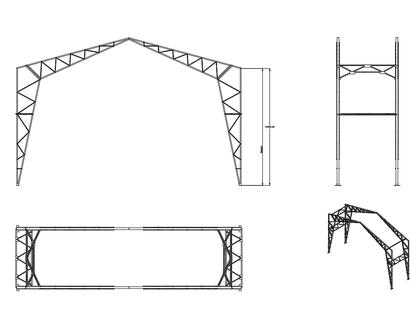In the vast realm of mathematics, there exist intriguing concepts that capture the imagination of both students and experts alike. One such concept is diagonaux, which pertains to the study of diagonals in various geometric shapes. In this blog post, we will embark on a journey to uncover the significance, properties, and applications of diagonaux in mathematics.
Understanding Diagonaux
Diagonaux refers to the study and exploration of diagonals within geometric figures. Diagonals are straight lines that connect two non-adjacent vertices of a polygon, creating a cross-sectional link between opposite corners. While seemingly simple, diagonals possess unique properties and play a crucial role in understanding the structure and symmetry of geometric shapes.
Properties of Diagonals
Length and Measurement
Diagonals can vary in length depending on the size and dimensions of the polygon. In some cases, diagonals may be equal in length, while in others, they can differ significantly.
Intersecting Angles
Diagonals intersect each other within polygons, forming angles at their point of intersection. The measurement of these angles can provide valuable insights into the internal angles and symmetry of the polygon.
Bisecting Segments
Diagonals bisect each other within certain polygons, dividing them into two congruent triangles or quadrilaterals. This property is particularly useful in geometric proofs and constructions.
Applications of Diagonaux:
Geometry and Spatial Reasoning
Diagonaux play a fundamental role in geometric reasoning and problem-solving. By analyzing the properties of diagonals, mathematicians can deduce relationships between various components of geometric shapes.
Engineering and Architecture
Diagonals are essential elements in structural design and architectural planning. Engineers utilize diagonal bracing to reinforce structures and distribute forces evenly, ensuring stability and durability.
Computer Graphics and Design
In digital design and computer graphics, understanding diagonals is crucial for creating visually appealing compositions and layouts. Diagonal lines are often used to convey movement, depth, and perspective in graphic design.
Exploring Diagonaux in Different Shapes:
Rectangles and Squares
In rectangles and squares, diagonals bisect each other and form right angles. The length of the diagonal can be calculated using the Pythagorean theorem.
Triangles
Diagonals in triangles connect vertices that are not adjacent to each other. Depending on the type of triangle (equilateral, isosceles, or scalene), the properties of diagonals vary.
Polygons
Diagonals in polygons connect non-adjacent vertices and can create numerous intersecting angles and bisecting segments, depending on the number of sides and the symmetry of the polygon.
Conclusion
Diagonaux represents a fascinating branch of mathematics that explores the intricate relationships between diagonals and geometric shapes. By understanding the properties and applications of diagonals, mathematicians, engineers, and designers can unlock new avenues for problem-solving and innovation. Whether in architecture, engineering, or digital design, the study of diagonaux continues to inspire curiosity and creativity in the world of mathematics.


